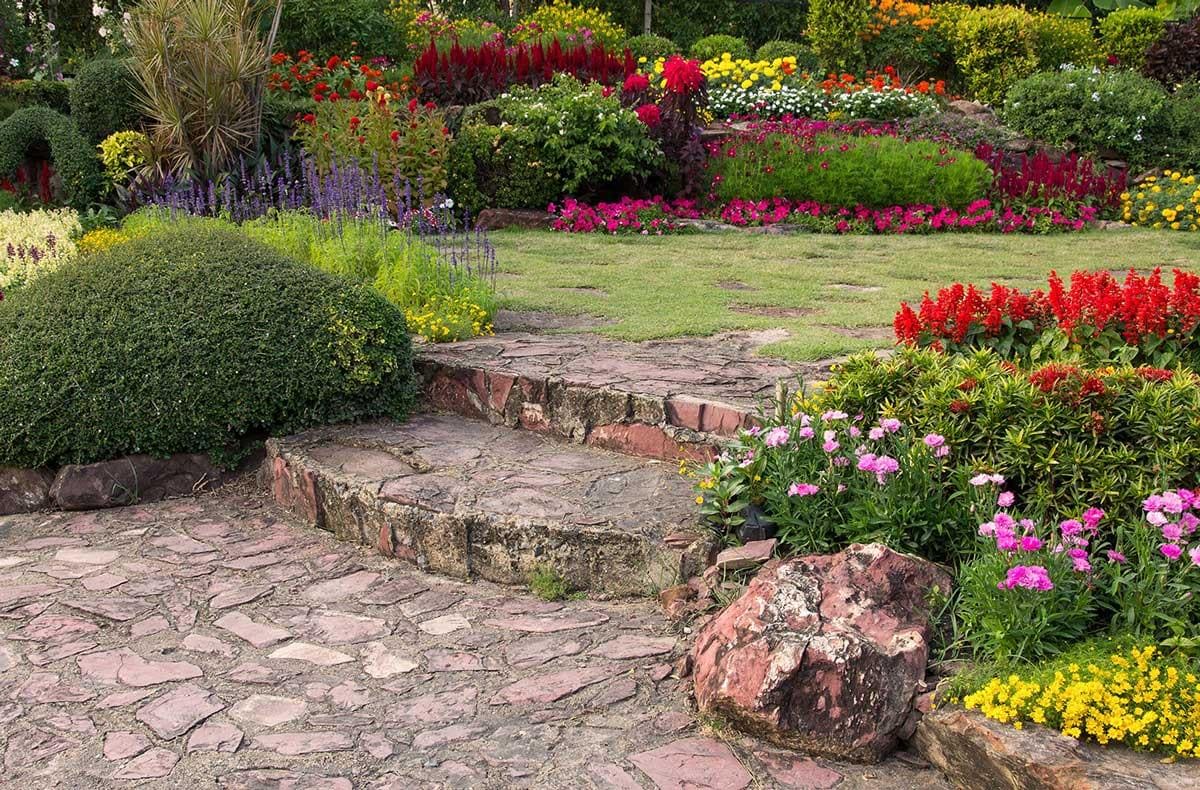Transform Your Space: A&G's Expert Landscape Design

Elevating Outdoor Environments: A Guide to Landscape Design Approaches
At A&G LANDSCAPE, we recognize that selecting the right landscape design approach is crucial for transforming your outdoor space into a functional and aesthetically pleasing environment. Understanding various methodologies empowers informed decisions that align with your vision and lifestyle.
Key Landscape Design Approaches
-
Structured Formal Design: Emphasizes symmetry, clean lines, and geometric patterns. This approach creates order and elegance, often incorporating classic elements like topiaries and defined pathways for a sophisticated aesthetic. (170 characters)
-
Naturalistic and Organic Layouts: Focuses on emulating nature's unconstrained beauty. This method uses native plants, irregular forms, and meandering paths, promoting biodiversity and harmony with the surrounding environment. (170 characters)
-
Modern Minimalist Aesthetics: Prioritizes simplicity, functionality, and uncluttered spaces. It employs a limited palette of materials, strong architectural lines, and open areas to achieve a sleek, contemporary, and serene ambiance. (172 characters)
To assist in this critical decision, A&G LANDSCAPE advises evaluating potential designs against key criteria that impact long-term satisfaction and enjoyment.
Essential Evaluation Criteria
-
Aesthetic Harmony: Evaluate integration with existing architecture and surrounding landscape, ensuring a visually pleasing and cohesive overall appearance. (120 characters)
-
Functional Utility: Assess practicality, including ease of movement, designated activity zones, and how well it serves the occupants' intended purposes. (120 characters)
-
Maintenance Requirements: Examine ongoing care needed, like watering, pruning, and seasonal upkeep, to determine long-term commitment for preservation. (120 characters)
-
Adaptability to Change: Evaluate design flexibility for future needs, evolving preferences, or environmental shifts without requiring extensive overhauls. (120 characters)
Comparative Analysis of Design Approaches
Structured formal designs achieve exceptional Aesthetic Harmony through precise geometry, symmetry, and balanced compositions, creating an impressive, orderly environment complementing traditional architecture. Functionally, these layouts feature clear pathways and distinct zones, guiding movement and ensuring areas serve intended purposes with elegant presentation.
However, formal designs typically demand higher Maintenance Requirements for crisp lines and pristine appearances, requiring regular pruning and meticulous care. Regarding Adaptability to Change, these designs are less flexible; their rigid structure means significant alterations often require substantial redesign, making fundamental shifts challenging.
Naturalistic and organic layouts achieve Aesthetic Harmony by mirroring nature's informal beauty. They blend seamlessly with the landscape, using native plants and irregular forms to create a relaxed, inviting atmosphere. Functionally, these designs often feature winding paths and less defined zones, encouraging exploration and fluid interaction with the space.
Maintenance Requirements for naturalistic designs vary; native plants often need less intensive care once established, but occasional management prevents overgrowth. Crucially, they offer greater Adaptability to Change. Their inherent flexibility allows easier incorporation of new elements or modifications as preferences evolve or environments shift.
Modern minimalist aesthetics achieve Aesthetic Harmony through simplicity and restraint. Clean lines, open spaces, and a limited material palette create a serene, uncluttered environment, emphasizing architectural elements. Functional Utility is paramount; spaces are designed for efficient use, ensuring clear circulation and ease of movement.
Minimalist designs boast lower Maintenance Requirements. With fewer plants, simpler hardscaping, and durable materials, upkeep is significantly reduced, ideal for clients seeking a sleek look without extensive gardening. Adaptability to Change is moderate; new elements must carefully align with the existing strong aesthetic.
Recommendations for Choosing Your Landscape Design
For properties with classical architecture or a desire for a grand, orderly outdoor experience, the Structured Formal Design is optimal. It provides timeless elegance and refined control, suitable for estates prioritizing a dignified aesthetic. Choose this when a meticulously manicured appearance is a key objective.
Clients seeking harmony with nature, biodiversity, and a relaxed, inviting atmosphere will find Naturalistic and Organic Layouts highly appealing. Ideal for larger plots, rural settings, or those appreciating an evolving landscape integrated with its environment. It fosters tranquility and ecological mindfulness.
The Modern Minimalist Aesthetic is best for contemporary homes or urban environments where simplicity, functionality, and low maintenance are paramount. This design creates a sophisticated, uncluttered space, enhancing modern architecture and providing a serene retreat for elegant outdoor living.
Ultimately, the best approach depends on your property's unique characteristics, personal preferences, and lifestyle. A&G LANDSCAPE specializes in understanding these nuances, crafting bespoke landscape designs that reflect your vision, optimizing beauty and functionality.